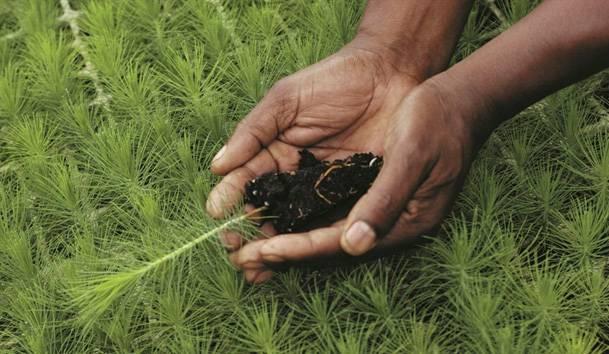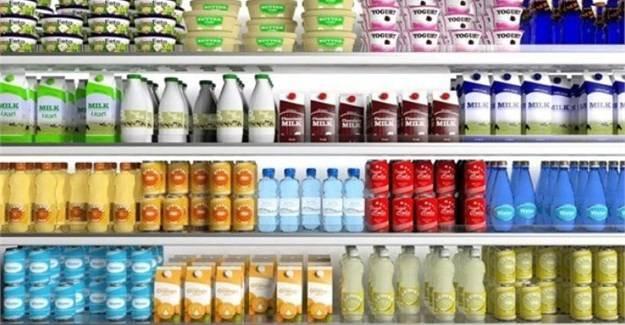
10 minute read
In Mumbwa GMA trees are disappearing, fast
By Gaynor Selby
We had only driven a few hundred meters inside the Mumbwa Game Management Area (GMA), branching off from the M9, the road that leads to Mongu, when we found the first evidence of the destruction – a large charcoal kiln. When our vehicle came to a stop, a man and two young boys making the kiln took to their heels, disappearing behind the tall trees. Kennedy, one of the game rangers escorting us, counted about 50 fresh stumps of the mutondo tree around the kiln. He wagged his head, more in frustration than in disbelief.
Advertisement
The game ranger has now become accustomed to such scenes in this protected swath of forest, which also acts as a buffer zone for the country’s largest wildlife sanctuary – the Kafue National Park, which occupies 22,400km/sq.
The Mumbwa GMA is made up of two protected forests known as Mumbwa East and Mumbwa West, sitting on 3,760km/sq of land.
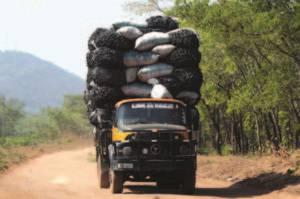
opened field. And driving deeper into the forest, we made a grim discovery – largescale charcoal production. The largest kiln we found measured three metres wide, 40 metres long and about two metres high. food ingredients or as bioenergy is emerging as sustainability efforts evolve. Forward-thinking companies are driving green energy strategies throughout their supply chains.
On the edge of a clearing, Felix Mumba was standing by his 60 bags of charcoal. He was waiting for a truck to deliver the bags to Lusaka.

He makes about K2,500 profit on each trip, delivering between 150 and 180 bags deforestation continues to have a hugh negative impact on the environment. Unfortunately the high levels of illiteracy and lack of employment are the major drivers of deforestation.
Converting cocoa shells into green energy: Barry Callebaut utilizes agricultural “left-overs” to create valuable biochar
Barry Callebaut has started a new eco initiative to upcycle its cocoa shells into biochar, which looks similar to charcoal, supplies green energy, and reduces carbon emissions at the chocolate and cocoa giants’ operations. This is an “industry-first project” that sees the transformation of cocoa by-products into biochar – dubbed “agriculture’s black gold.” It comes as the concept of upcycling byproducts to be used as either Biochar is dubbed “agriculture’s black gold” and can be used to produce green energy. Image provided by Circular Carbon. In Barry Callebaut’s case, it comes just ahead of the chocolate and cocoa giant’s fourth Forever Chocolate Report, due to be published next week (December 3), which will detail the company’s progress toward its 2025 targets. The company’s Forever Chocolate strategy is all about making
sustainable chocolate the norm
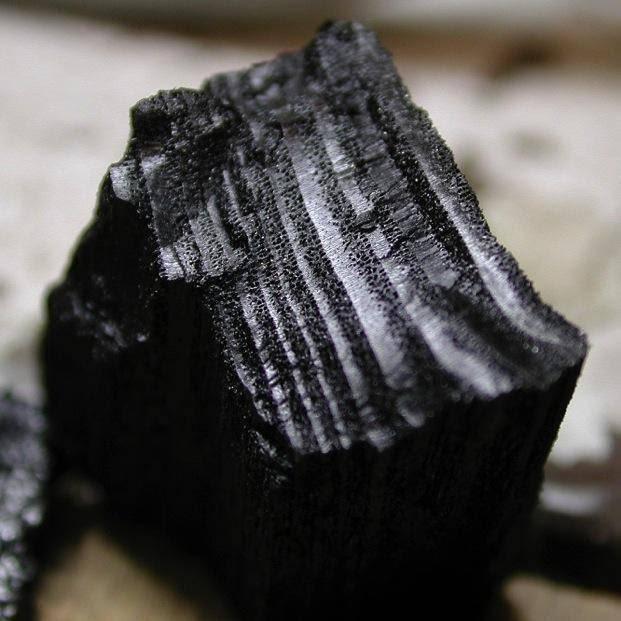
by 2025. It involved finding bold new ways of doing business and bringing partners together to make it happen.
The initiative has been two years in the making, and now Barry Callebaut has ramped up the infrastructure to commence producing biochar in one of its European factories.
The energy being released by the very efficient pyrolysis process of turning cocoa shells into biochar will be re-used for steam production, thus creating green energy. This energy will be used to help power facilities.
Mitigating climate change
“Biochar looks very similar to charcoal and is produced by pyrolysis. In simple terms, this means that biomass, such as agricultural or forest biomass waste, is heated to a very high temperature without oxygen to produce energy and biochar,” explains Geza Toth, global forest and carbon program lead and Neelke Verhelst, global sustainability operations lead.
“What is very interesting about biochar is that it can help to mitigate climate change. It can be used to produce energy, permanently store carbon, improve soil quality and reduce waste,” he says.
“Using our cocoa shells to produce biochar, will help us with achieving our Forever Chocolate target of becoming carbon positive by 2025. Ultimately, we want to benefit Barry Callebaut can use the cocoa shells to create green energy in its factories, as a fertilizer enhancer in soil, and as a carbon sink.
“A simple example of a carbon sink is that while trees can ‘temporarily remove’ carbon from the atmosphere, biochar applied to soil can capture carbon and store it for hundreds of years, thus creating a permanent carbon sink,” Toth details.
Neelke Verhelst, globalsSustainability operations lead at Barry Callebaut, explains that at the beginning, the idea of producing biochar was quite conceptual.
“However, one of the great benefits of Barry Callebaut is the innovative culture and encouragement to think outside-of-the-box to find creative solutions. We also partnered with Circular Carbon, who provided us with the technical expertise to translate the idea of producing biochar into practical reality.”
Circular Carbon works with corporate leaders and experts who advocate mitigation of climate change as a business opportunity.
This circular economy concept is seeing more brands and companies proactively implementing sustainability at the core of business. Barry Callebaut is also looking into the production of biochar at farm level. In the cocoa origin countries where it sources, biochar can be used on cocoa farms as a natural fertilizer enhancer.
“Biochar has a remarkable ability to act like a sponge, so if you mix fertilizer with Biochar, it enables the fertilizer to be very slow releasing,” explains Verhelst.
“At farm level, instead of using cocoa shells, which will be used at processing level to create green energy, we are looking at creating Biochar from agricultural residues, like empty cocoa pod husks, pruning material and other residues,” she continues.
“The ultimate goal is to keep biomass on the farm and enhance living soils. By combining the use of biochar with compost, for example, we also reduce methane emissions from the decomposition of farm waste.”
Utilizing agricultural ‘left-overs’ to create valuable biochar is a real circular economy business case, which benefits both cocoa farmers and business. In fact, just last month Barry Callebaut unveiled its
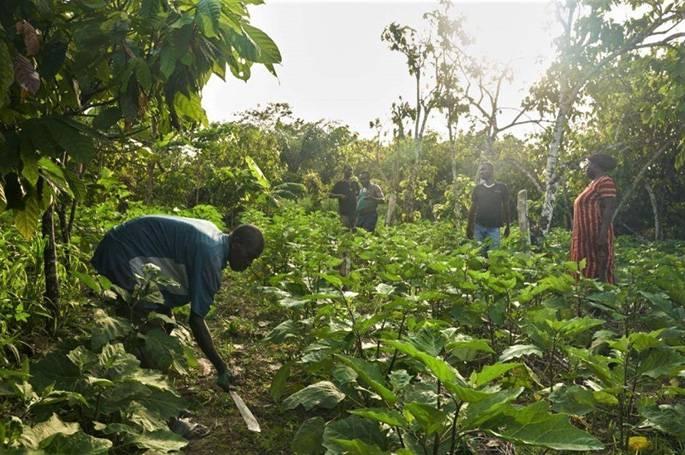
To put this into perspective, Verhelst details that the carbon released into the atmosphere from dead plant material and decomposing biomass, globally, is about ten times more than carbon released by fossil from intact citrus peels, a byproduct of the juicing
fuel burning.
“So you can see, there is a very good reason to consider how we can utilize agricultural ‘left-overs’ to create valuable biochar. A real circular economy business case, which benefits both cocoa farmers Moro, Italy, discovered that bread waste destined for in food industries such as bakeries, dairy and wine-
and business,” she says.
Barry Callebaut is collaborating with the Ithaka Institute and currently trialing the use of biochar in the field to evaluate the impacts of improved soil quality.
Eventually, it aims to increase cocoa yield, reduce the need for agrochemicals, and ultimately increase 85 percent of, on average, US and UK consumers
farmer livelihoods.
Upcycling on the rise
The upcycled food movement is growing more prominent as brands come under intense scrutiny on their environmental and ethical credentials. Transforming waste streams into value-added, an increasing number of projects within the F&B industry.
newly-created industry category with its Cabosse Naturals brand that utilizes parts of the cacao fruit that have historically been discarded.
CP Kelco’s clean label Nutrava Citrus Fiber is sourced industry, while Renewal Mill specializes in “oat okara” – a nutritious flour made from the oat pulp leftover when oat milk is made.
In March, a study from the University of Bari Aldo dumpsters could be used as a medium for cultivating microbial starters for the food industry. Repurposing the discarded dough from bread production can feed the microorganisms needed to set up fermentation making.
Innova Market Insights’ research indicated that premium ingredients is on the rise, and there is
expected companies to invest in sustainability in 2019, up from 64 percent in 2018. In the area of food waste, upcycling is the new recycling, as companies strive to follow a zero-waste approach by creating value from by-products.
Energy, Mining, Oil
ZAMBIA

ALATEST study has revealed that Zambia has potential of producing 1,192 megawatts off-grid electricity will guide the development of sustainable biomass
and 15,797 tera-joules of energy for alternative cooking per year from the bioenergy sector.
Ministry of Energy Permanent Secretary Trevor Kaunda said the study revealed that the country has a combined achievable potential of 74 million litres contribute towards increasing access to clean and
per year of ethanol from molasses and cassava.
Mr Kaunda said the study has been undertaken to assist the country in assessing the extent to which sustainable bioenergy can contribute to the current energy mix.
He said in a speech read for him by department of energy acting assistant director Mafayo Ziba the bioenergy sector necessary for planning and decision-making.
“Given this potential, the bioenergy and food security assessment report for Zambia will indeed complement Government’s development efforts and energy strategies that integrate food security and agricultural needs.
“We envisage that the findings of this study will that the study has identified unknown potential of
modern energy in line with the national energy policy 2019



Zambia’s electricity demand is projected to increase by 200 megawatts (MW) per annum, as Government call for concerted efforts from all stakeholders to ensure investments in supply options meet the rising demand. The low rates of access to electricity services coupled with demand for electricity which is projected to increase from 150MW to 200MW presents a huge task for Government, Energy Minister Matthew Nkhuwa said in Lusaka on Tuesday
27th October 2020. He was speaking during the official opening of the Renewable Energy in Zambia conference under the theme “Renewable Energy in Zambia: Opportunities for French and Zambian Companies.” The minister said this also presents an opportunity for the private sector to invest and tap into the many opportunities in Zambia’s power market and contribute to the achievement of set targets of electrification. “This scenario calls for concerted efforts from all stakeholders to ensure investments in supply options meet this increasing demand for sustainable energy services.” Mr. Nkhuwa said. Currently, the country’s demand for electricity stands at 2,300 MW. The minister however said the sector was only able to produce 1,490MW thus giving a deficit of 810MW. Mr. Nkhuwa said this situation resulted from limited investment over the years, stating that the deficit had been worsened by the effects of climate change on availability of water, considering that Zambia was highly dependent on hydro power.
He said Government had prioritized the energy sector as key driver for socioeconomic development and a key tool in addressing developmental inequalities in rural areas. “We are committed to creating an enabling environment that encourages private sector investments in Energy infrastructure as evidenced by the approval of the National |Energy Policy of 2029 which ushered the enactment of the Electricity Act No.11 of 2019 and the Energy Regulation Act No.12 of 3019” he said. Government would continue to enhance the policy and regulatory framework in order to foster investments in the energy sector for accelerated development and provision of electricity services throughout the country.
Zambia’s ambassador to France, Christine Kaseba Sata, said COVID-19 had derailed a lot of opportunities that affected the growth of economies. Dr, Kaseba Sata said the pandemic should however not stop businesses from forming partnerships to drive growth. She indicated that there were currently 40 French companies operating in Zambia with most of them investing in the energy sector. “I believe that this forum will give us the opportunity to access the potential of renewable energy in Zambia. It is anticipated that renewable energy will lead Zambia’s energy sector. “The energy outlook for Zambia looks bright. We will continue as a mission to foster public and private sector with opportunities being offered in Zambia.” She added. Outgoing French ambassador to Zambia Sylvain Berger expressed confidence that his country would expand its energy sector with enhanced investments in renewable energy. Mr. Berger said the French Government was interested in helping Zambia address its energy challenges
Monitor the use of POWER at home


